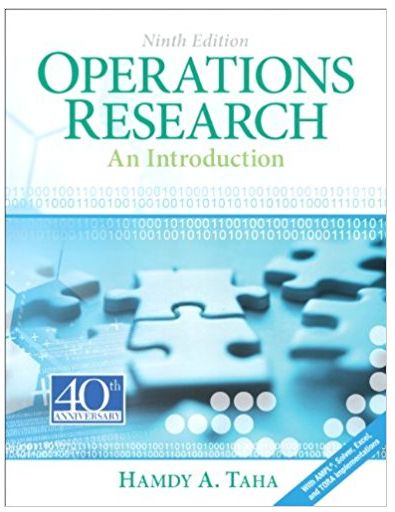Consider the following LP: Maximize z = 16x1 + 15x2 Subject to 40x1 + 31x2 124
Question:
Maximize z = 16x1 + 15x2
Subject to
40x1 + 31x2 ≤ 124
- x1 + x2 ≤ 1
X1 ≤ 3
X1, x2 ≥ 0
(a) Solve the problem by the simplex method, where the entering variable is the non basic variable with the most negative z-row coefficient.
(b) Resolve the problem by the simplex algorithm, always selecting the entering variable as the non basic variable with the least negative z-row coefficient.
(c) Compare the number of iterations in (a) and (b). Does the selection of the entering variable as the non basic variable with the most negative z-row coefficient lead to a smaller number of iterations? What conclusion can be made regarding the optimality condition?
(d) Suppose that the sense of optimization is changed to minimization by multiplying z by -1. How does this change affect the simplex iterations?
Fantastic news! We've Found the answer you've been seeking!
Step by Step Answer:
Related Book For 

Question Posted:





